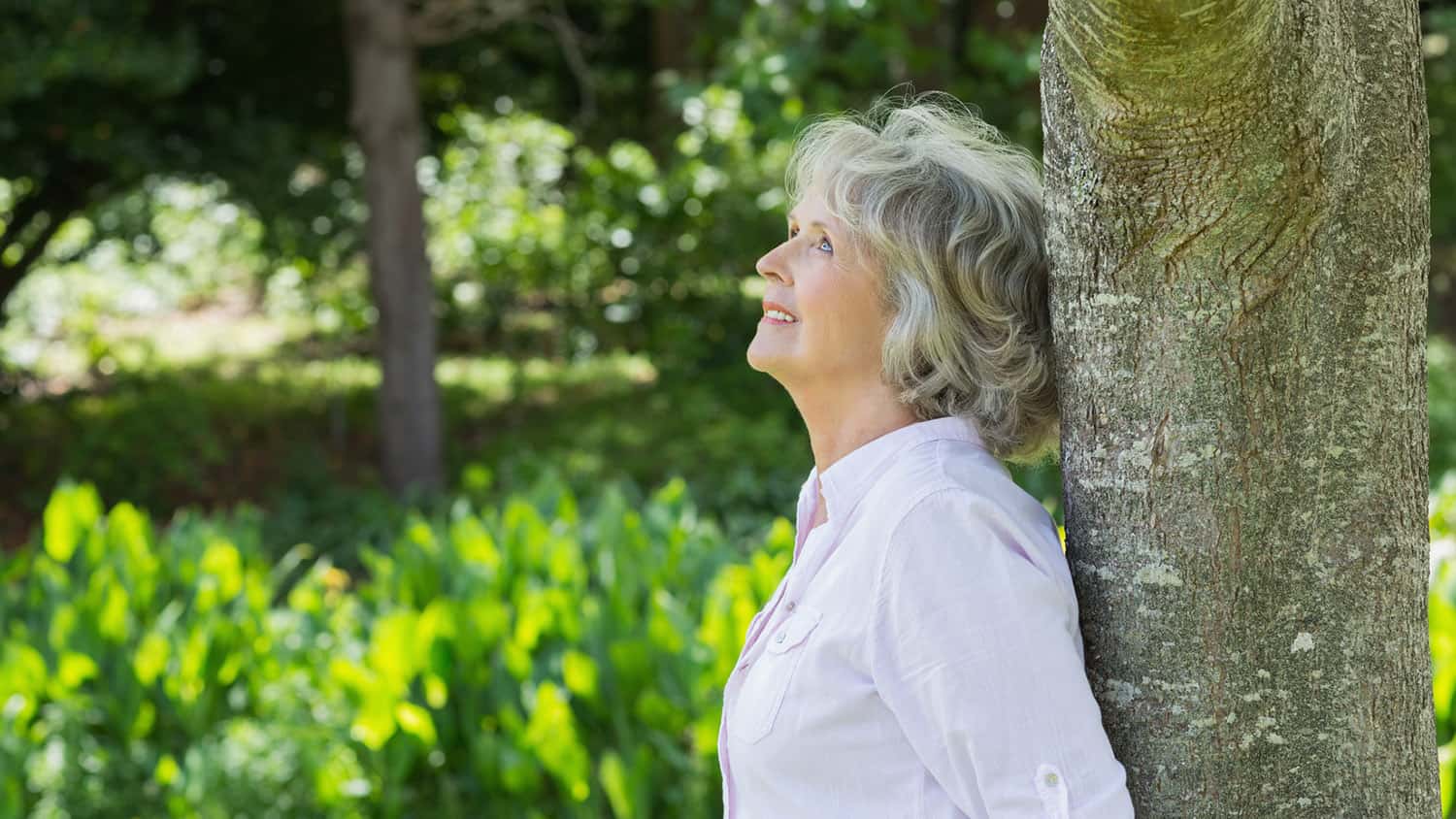
4 Unexpected Tips for Living Longer with Chronic Disease: I Want Trees, Please
We all know that we are not going to live forever. But when we enter our 60s, the harsh reality of our own expiration date hits home.
The good news is that if you are 67 years old and have no chronic diseases, you can expect to live another 22.6 years. You will likely live to see your 90th birthday!
If you have a chronic disease – or more than one – you are in good company. Nearly four in five older Americans live with multiple chronic medical conditions. And this is without factoring in the pandemic.
Do You Have Multiple Chronic Diseases?
At the age of 63, I learned I had systemic lupus, rheumatoid arthritis, Raynaud’s Syndrome, and Sjogren’s Syndrome. “How long will I live?” I thought to myself.
In my stunned state, I could not verbalize this question to my physician. I am a retired nursing professor. I knew I could get the answer. As soon as I got home, I googled “peer reviewed clinical trials on life expectancy with several chronic diseases.”
In an instant, I had my answer.
“Life expectancy decreases by approximately 1.8 years with each additional chronic condition.”
Ok, I could live with that. But what about systemic lupus specifically? I lost many patients to lupus over the years.
Is My Chronic Disease Different?
I narrowed my search criteria. I wanted to know about life expectancy, women, and systemic lupus. I googled “Peer reviewed clinical trials on life expectancy for women with systemic lupus.”
This headline hit hard: “Lupus Patients, Especially Women, Die at Younger Ages.”
The 2017 Stanford study showed that “Women with systemic lupus erythematosus (SLE) in the U.S. live on average 22 years less – and men an average of 12 fewer years – than members of the same sex among the public at large.”
At 65, I felt like my time was almost up.
My fate was sealed.
Something More, Please
Like you, I want more than statistics. And I want more than conventional medicine – medications and medical advice.
I want beauty, joy, and solid science to show me the way.
I want to live longer. I want to feel and look great while I am at it.
Following Doctors Orders
I take my prescribed Plaquenil medication for lupus. It eases my symptoms.
For the first year, I followed my doctor’s advice to stay out of the sun. I did one better – I stayed inside most of the time.
The year of my diagnosis, I was anxious, sad, and angry. It took me a year to practice going outside.
According to research, we all spend, on average, 93% of our time inside. I was surprised to learn that we spend more time inside than a maximum security prisoner.
I tell my story of hiding inside in my book Take Back Your Outside Mindset. Between those covers I also share my journey from rock bottom to health, hope, and happiness with the help of trees.
Trees, Please
To study life span and trees, research teams follow where people live and how long they live over many years. One scientist summed up his results by saying, “in general, it is best to have trees around.”
The research team led by Dr. Dan Crouse found that living with two blocks of green space makes you live longer.
The study found that in areas of high pollution people die earlier. And that even in low levels of pollution, they could measure the effect on life span. Trees made the difference.
Do Trees Help Us to Live Longer with Chronic Disease?
A 2017 nation wide Harvard study matched trees and chronic disease. Scientists discovered that those women who lived with trees and green spaces around their homes, lived longer.
The 100,000 women who had greenness within a 15-minute walk radius of their homes, had a 12% lower early death rate than those is the least green areas.
How They Did It
This study started in 1976 with 121,701 female registered nurses – 30–55 years old, from 11 states. “Twice a year nurses state their medical diagnosis and their health exposures.” The study defined health exposures as: air pollution, noise, and extreme heat.
The nurses were into it, with response rates as high as 90%. The researchers calculated response rate in this study as the number of women who returned the survey and are still alive.
A major strength of this study was the use of sophisticated satellite imagery from NASA’s Terra satellite. This allowed the researchers to measure the detail of greenness around each study participant’s residence. They measured a radius reachable in a 10–15-minute walk around their home.
Step Outside and Breathe
The research is in. To extend our lives, we simply have to step out the door and breathe.
When we are on a fixed income and have fixed energy levels – simple, effortless, and free count.
Here are some research-based tips for getting the most of tree air.
Start Small
Science shows that a few minutes outside bring proven health benefits.
Time outside intervals (dose) and health benefits (response) are in my research based Tree Air Action Plan.
Notice Something New
Make a plan to notice something new each time you go outside. Next time you go outside, plan to bend down and touch a plant, shrub or tree for a few seconds. 60-something Stanford psychologist Ellen Langer, PhD, says that ‘noticing’ puts our minds in the present.
Take Your Deepest Breath of the Day
Try to take your deepest breath of the day when you are outside. One deep breath flips your nervous system from anxious (sympathetic) to calm (parasympathetic). When you breathe in near trees, you are breathing in longevity aerosols.
Celebrate Small Wins: You Went Outside Today for Two Minutes!
High five! Even if you managed to step outside to breathe for two minutes – this is a win. Say “good for you” to yourself. This way, you and your brain are creating outside habits.
Let’s Have a Conversation:
How much time do you spend outside on any given day? What are your outside habits/rituals? Do you have strategies to get yourself outside? How do you feel once you are outside? How do you think you look to others when you are outside? Please join the conversation.
Tags Medical Conditions







Hi Verla
I love your book Take back your outside mindset it sits right beside me to pick up whenever I need a ‘pick me up’ to face the day
My strategy to restore or maintain my equilibrium is to walk out my front door, put one foot in front of the other and seek out local trees. You don’t have to walk far to find some trees. I used to live in the city and London has the most amazing green spaces
To stand and notice and slow down has such a dramatic effect on my emotional health, heart rate, breath and well being just thinking of the trees that I have become familiar with makes me smile for joy.
Yvonne your words are music to my ears! I am reading it out loud to myself so I can get the full benefit :) Thank you for finding your trees. I know that you will want to protect them too. Yours, Verla